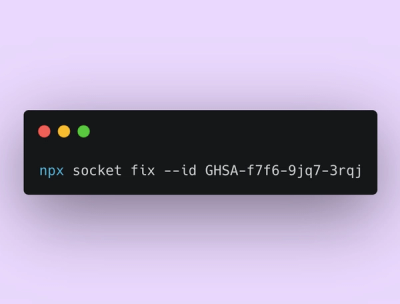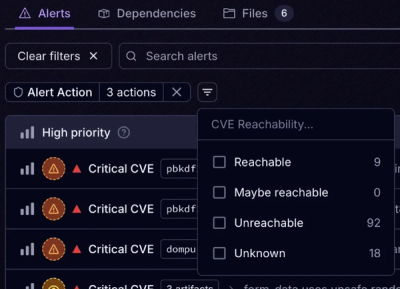
Product
Announcing Socket Fix 2.0
Socket Fix 2.0 brings targeted CVE remediation, smarter upgrade planning, and broader ecosystem support to help developers get to zero alerts.
A lightweight TypeScript client for sending transactional emails through the NotifyCX Email API.
npm install notifycx
Initialize the Client
import Notify from "notifycx";
const notify = new Notify("your-api-key");
You can optionally specify a custom API URL during initialization:
const notify = new Notify("your-api-key", "https://api.notify.cx/v1");
Before using the client, you'll need an API key:
Keep your API key secure and never share it publicly or commit it to version control.
To send a basic email without a template:
notify.sendEmail({
to: "recipient@example.com",
subject: "Hello",
name: "John Doe",
message: "Your email content here",
});
To send an email using a pre-defined template:
notify.sendEmailFromTemplate({
to: "recipient@example.com",
from: "noreply@notify.cx",
templateId: "<your_template_id>",
variables: {
name: "John Doe",
company: "Example Inc.",
},
});
You can also use method chaining if preferred:
Sending a basic email:
new Notify("<your_api_key>").sendEmail({
to: "recipient@example.com",
subject: "Hello",
name: "John Doe",
message: "Your email content here",
});
Sending a template-based email:
new Notify("<your_api_key>").sendEmailFromTemplate({
to: "recipient@example.com",
from: "noreply@notify.cx",
templateId: "<your_template_id>",
variables: {
name: "John Doe",
company: "Example Inc.",
},
});
Parameters for sending a basic email:
to (string): Recipient email addresssubject (string): Email subject linename (string): Recipient namemessage (string): Email contentParameters for sending a template-based email:
to (string): Recipient email addressfrom (string): Sender email address (optional)templateId (string): ID of the template to usevariables (object): Variables to use in the template (optional)Parameters for sending a basic test email:
to (string): Recipient email addresssubject (string): Email subject linename (string): Recipient namemessage (string): Email contentParameters for sending a template-based testemail:
to (string): Recipient email addressfrom (string): Sender email address (optional)templateId (string): ID of the template to usevariables (object): Variables to use in the template (optional)The client includes built-in error handling. Both sendEmail and sendEmailFromTemplate methods will throw an error if the API request fails:
try {
await notify.sendEmail({
to: "recipient@example.com",
subject: "Hello",
name: "John Doe",
message: "Your email content here",
});
} catch (error) {
console.error("Failed to send email:", error);
}
MIT
For more information and detailed documentation, visit notify.cx.
FAQs
NotifyCX API Client
We found that notifycx demonstrated a healthy version release cadence and project activity because the last version was released less than a year ago. It has 0 open source maintainers collaborating on the project.
Did you know?

Socket for GitHub automatically highlights issues in each pull request and monitors the health of all your open source dependencies. Discover the contents of your packages and block harmful activity before you install or update your dependencies.

Product
Socket Fix 2.0 brings targeted CVE remediation, smarter upgrade planning, and broader ecosystem support to help developers get to zero alerts.

Security News
Socket CEO Feross Aboukhadijeh joins Risky Business Weekly to unpack recent npm phishing attacks, their limited impact, and the risks if attackers get smarter.

Product
Socket’s new Tier 1 Reachability filters out up to 80% of irrelevant CVEs, so security teams can focus on the vulnerabilities that matter.